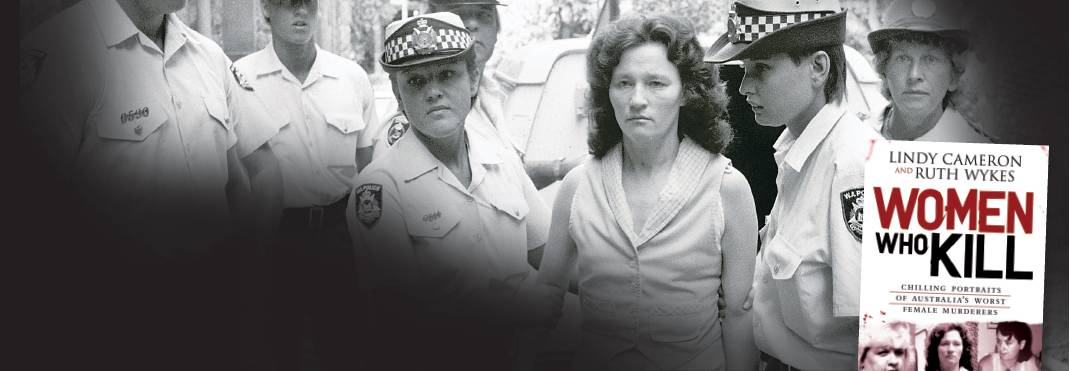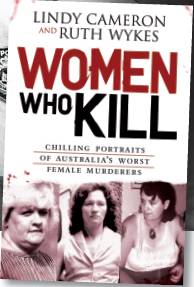‘Don’t ever call me helpless’
In an extract from the book about female killers she has co-written, Ruth Wykes tells of her close encounters with Catherine Birnie
Catherine Margaret Birnie resides in Perth’s Bandyup Women’s Prison. It has been her home for 22 years, and if public sentiment is any measure of her future, she will remain there for the rest of her life.
In 1987, she was imprisoned for abducting, kidnapping, torturing and murdering four Perth women and attempting to murder a fifth.
She and her late partner David Birnie were kidnappers. They were torturers. They were sexual sadists. They are serial killers.
When I met Cathie Birnie in 1990 I was fascinated. I wanted to know whether she had been under the evil influence of David or whether there was something different, something missing that made her a callous killer in her own right.
It’s fair to say that I have never met anyone like Cathie before, so for a long period of time I had no point of reference.
However, over the next eight years I had several encounters with her, and numerous conversations. I was working for the WA AIDS Council during that time and frequently went to Bandyup Women’s Prison to conduct workshops.
Cathie is very passive and almost childish in her day-to-day interactions. Like others who seem to have something missing, she lacks affect when she is relating a story.
When she has an audience Cathie is willing to talk at length about murder. Sometimes I got the sense that the six-week murder spree she embarked on with David was the thing that she allowed to define her, almost to shape her whole identity.
In all the time I knew Cathie, the period of time when she was most animated was when another serial killer was stalking young women in Perth. From January 1996 to March 1997 three young women disappeared from Claremont. Two of the women, Jane Rimmer and Ciara Glennon, were found murdered.
The disappearance of the first woman to go missing, Sarah Spiers,
remains unsolved.
I remember the city being gripped by a palpable fear.
It seemed that the only woman I knew who was impervious to the fear, and who had no sense of the negative impact this was having on women, was Cathie.
In fact she was the first person to suggest to me, not long after the first victim, Ms Spiers, had disappeared, that a serial killer was hunting and that Sarah was his second victim. At the time I thought it was nonsense because the only thing anyone knew was that a young woman had disappeared, and the news was generating a lot of media publicity. Cathie insisted she knew something, and was insistent that someone was copying her and David.
It wasn’t until five months later when the Claremont serial killer abducted and murdered Ms Rimmer that I began to feel uncomfortable with what I’d been hearing. Was it mind games? Snippets of a truth? Manipulation?
For the first time in all my interactions with Cathie I felt a tingle of fear run up my spine.
One exchange I had with her will stay with me forever. I was in the library alone with Cathie and she was showing me through the books. We were having a discussion about
writers and genres, when she led me to the crime section.
It felt somewhat surreal to be standing in a prison library, perusing crime books with a serial killer, but I’m an adventurous woman.
Cathie was chatting about the Lindy Chamberlain book and for some reason I was annoyed with her, that small girly voice she was using, and the innocent tone she was taking. I turned to her and said: “Cathie, don’t play the helpless female with me — it gives me the shits.”
A more savvy person than me would have made sure I was between a murderer and the exit, but I hadn’t given it a second thought. I was up against the bookcases, and before I knew it her hands were on me, applying uncomfortable pressure.
That wasn’t what made me think I was experiencing the last moment of my life — it was the physical change in her face: pure rage.
Then through gritted teeth she said: “Don’t ever call me helpless, you forget what I can do.”
She let me go — but it was the most revealing moment I had ever experienced with her. Not because of what she had said to me, or because she had used physical intimidation to frighten me.
But because she had let the mask slip, and I had seen what was underneath: rage, callousness, disregard, violence.
I don’t understand Cathie Birnie. I have tried to, but she is far too complex — too different — for me to know. I do know this: something is missing in her emotional make-up.
Maybe the death of her mother and her subsequent unstable childhood deprived her of those fundamental building blocks on which our values and consciences are shaped. What I do know is that she is a criminal who actively participated in some of the most sadistic crimes known.
I’ve never seen her show one iota of remorse. In all the discussions I’ve had with her about her crimes she has never shown embarrassment, shame, regret . . . and she has never said sorry.
Within the walls of Bandyup Prison Cathie Birnie is a “model prisoner”. Is Cathie Birnie a psychopath? I’m not qualified to make that call. I know she sat in her car and lured innocent women into it, fully aware of what she was intending to do to them. She held knives to their throats. She tied them to her bed. She watched her partner violently rape them, took photos, and at times even joined in with the degrading and sickening acts. She watched as they were being murdered, and in one case committed the murder herself. She helped dig their graves, bury them. And she spat on the grave of one of her victims. She has no remorse. We were having a conversation one day, talking about ways to deal with some mundane problem that had cropped up in prison. I suggested that she probably didn’t have much power to change the situation. Cathie looked at me, smirked and said: “You talk about power as if you know what it means. You don’t know what power is, Ruth. Power is when you hold somebody’s life in your hands — and then you end it.” I walked out of prison that day convinced that Cathie Birnie is beyond redemption.
Women Who Kill: Chilling Portraits of Australia’s Worst Female Murderers by Lindy Cameron and Ruth Wykes is published by The Five Mile Press and will be released next month.
(Birnie) has never shown embarrassment, shame, regret . . . And she has never said sorry.

